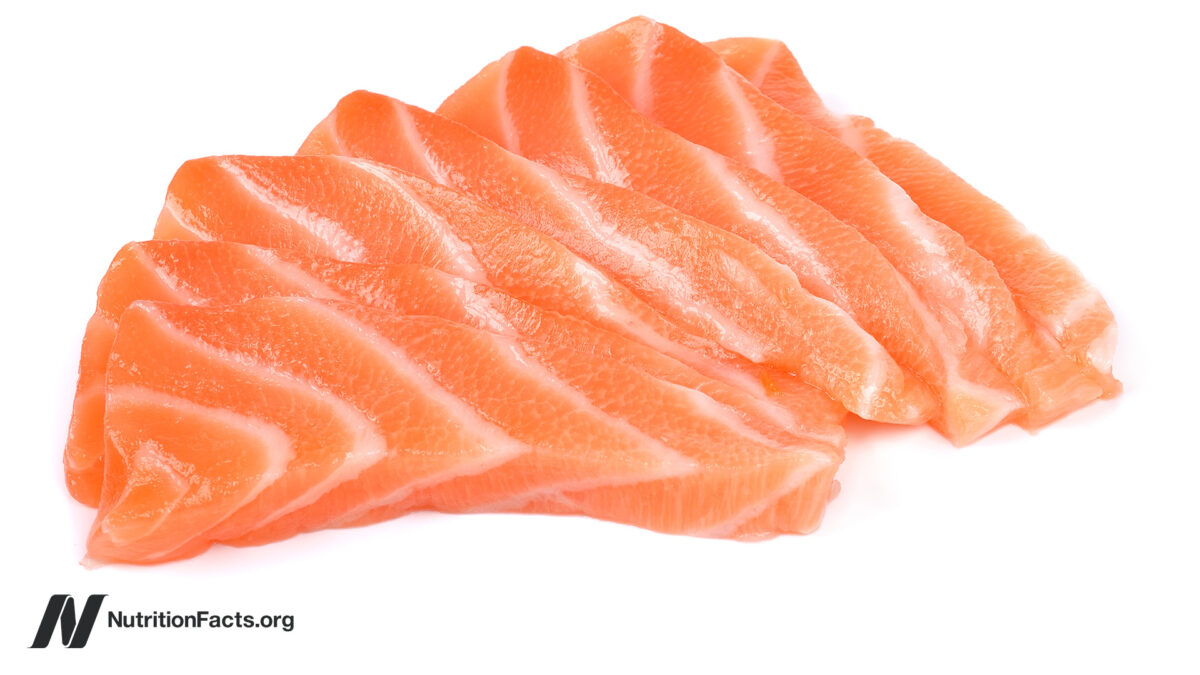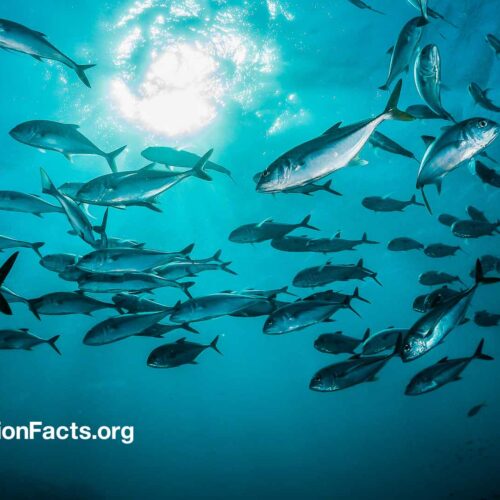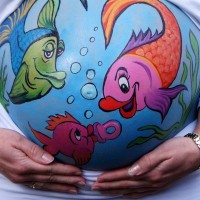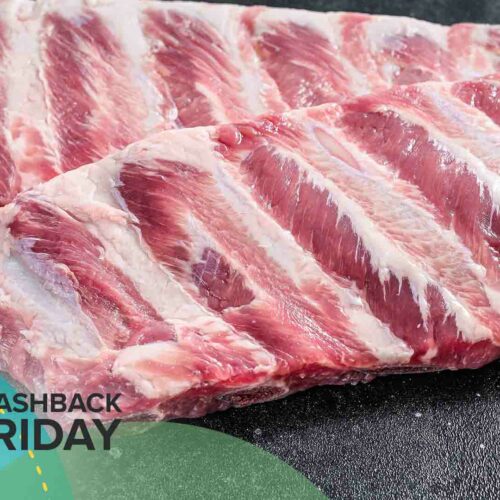Advisories telling pregnant women to cut down on fish consumption may be too late for certain persistent pollutants.
If you intentionally expose people to mercury by feeding them fish (like tuna) for 14 weeks, the level of mercury in their bloodstream goes up, as you can see in the graph below and at 0:14 in my video Avoiding Fish for Five Years Before Pregnancy. As soon as they stop eating fish, it drops back down such that they can detox by half in about 100 days. (So, the half-life of total mercury in our blood is approximately 100 days.) Even if you eat a lot of fish, within a few months of stopping, you can clear much of the mercury out of your blood. But what about your brain?

The results from modeling studies are all over the place, providing “some extreme estimates (69 days vs. 22 years).” When put to the test, though, autopsy findings suggest the half-life may be even longer still at 27.4 years. Once mercury gets in our brains, it can be decades before our body can get rid of even half of it. So, better than detoxing is not “toxing” in the first place.
That’s the problem with advisories that tell pregnant women to cut down on fish intake. For pollutants with long half-lives, such as PCBs and dioxins, “temporary fish advisory-related decreases in daily contaminant intake will not necessarily translate to appreciable decreases in maternal POP [persistent organic pollutant] body burdens,” which help determine the dose the baby gets.
Consider this: As you can see in the graph below and at 1:32 in my video, an infant may be exposed to a tumor-promoting pollutant called PCB 153 if their mom ate fish. But if mom ate only half the fish or no fish at all for one year, levels wouldn’t budge much. A substantial drop in infant exposure levels may only be seen if the mom had cut out all fish for five years before getting pregnant. That is the “fish consumption caveat.” “[T]he only scenarios that produced a significant impact on children’s exposures required mothers to eliminate fish from their diets for 5 years before their children were conceived. The model predicted that substituting produce for fish would reduce prenatal and breastfeeding exposures by 37% each and subsequent childhood exposures by 23%.” So, “a complete ban on fish consumption may be preferable to targeted, life stage–based fish consumption advisories…”

If you are going to eat fish, though, which is less polluted—wild-caught or farmed fish? In a recent study, researchers measured the levels of pesticides, such as DDT, PCBs, polycyclic aromatic hydrocarbons, and toxic elements, such as mercury and lead, in a large sample of farmed and wild-caught seafood. In general, they found that farmed fish were worse. Think of the suspect as farmed and dangerous. The measured levels of most organic and many inorganic pollutants were higher in the farmed seafood products and, consequently, so were the intake levels for the consumer if such products were consumed. For example, as you can see in the graphs below and at 3:09 in my video, there was significantly more contamination by polycyclic hydrocarbons, persistent pesticides, and PCBs in all of the farmed fish samples, including the salmon and seabass (though it didn’t seem to matter for crayfish), and the wild-caught mussels were actually worse. If you split adult and child consumers into those only eating farmed seafood or only eating wild-caught seafood, the level of pollutant exposure was significantly worse with the farmed seafood.
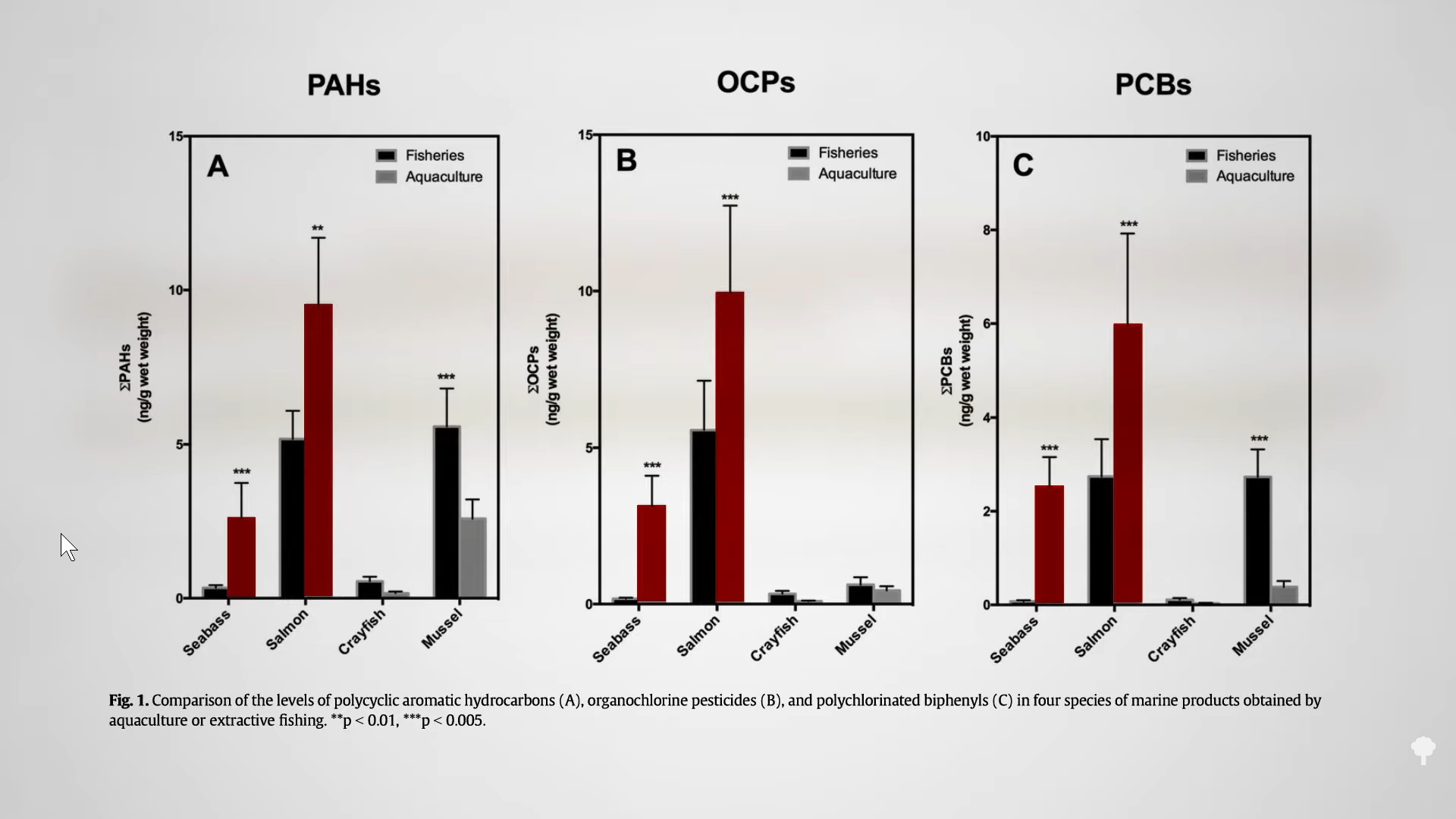
Overall, the researchers, who were Spanish, investigated a total of 59 pollutants and toxic elements. They concluded: “Taking all these data as a whole, and based on the rates of consumption of fish and seafood of the Spanish population, our results indicate that a theoretical consumer who chose to consume only aquaculture [farmed] products would be exposed to levels of pollutants investigated about twice higher than if this theoretical consumer had chosen only products from extractive fisheries [wild-caught fish].” So, when it comes to pollutants, you could eat twice the amount of fish if you stuck to wild-caught. That’s easier said than done, though. Mislabeling rates for fish and other seafood in the United States are between 30 and 38 percent, so the average fraud rate is around one in three.
In my previous video on this topic, How Long to Detox from Fish Before Pregnancy, I mentioned a study that suggests detoxing from fish for one year to lower mercury levels, but other pollutants take longer to leave our system.
For optimum brain development, consider a pollutant-free source of omega-3 fatty acids. Check out Should Vegan Women Supplement with DHA during Pregnancy?.
Aside from pollutants, there are other reasons we may want to avoid excessive amounts of animal protein. See Flashback Friday: The Effect of Animal Protein on Stress Hormones, Testosterone, and Pregnancy.
